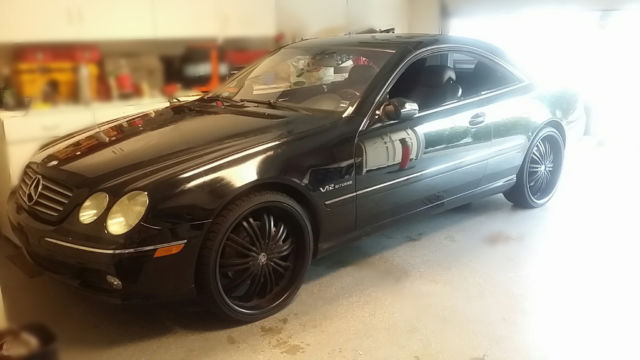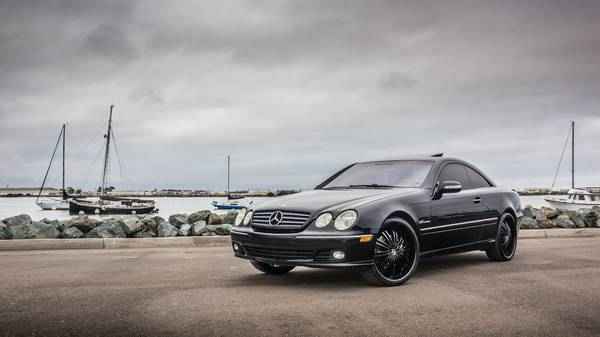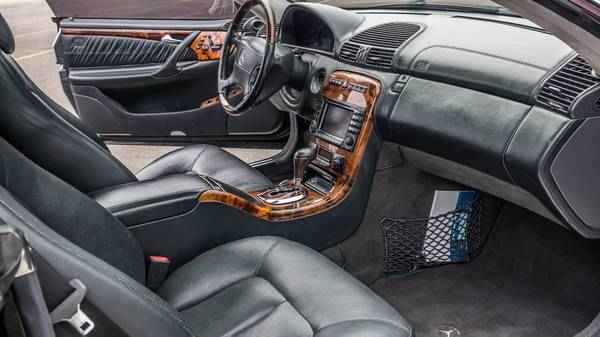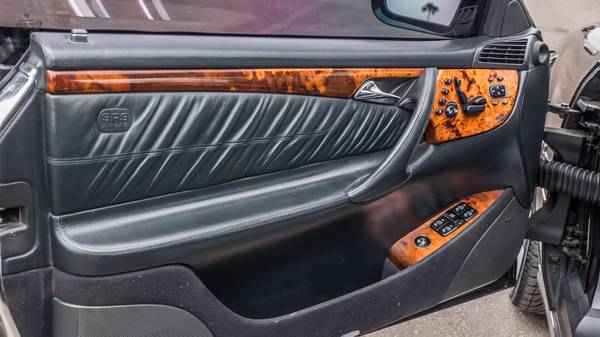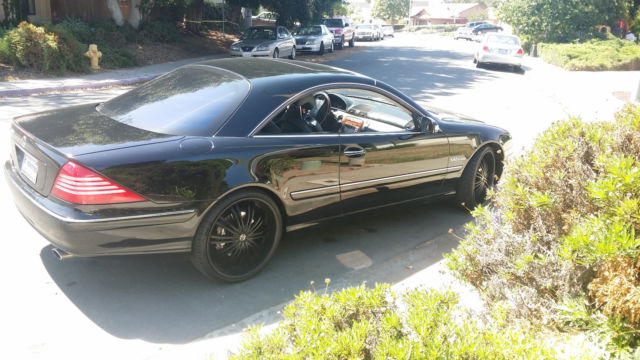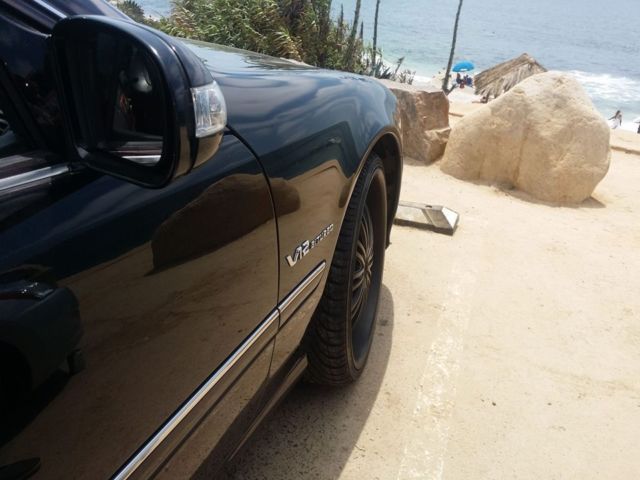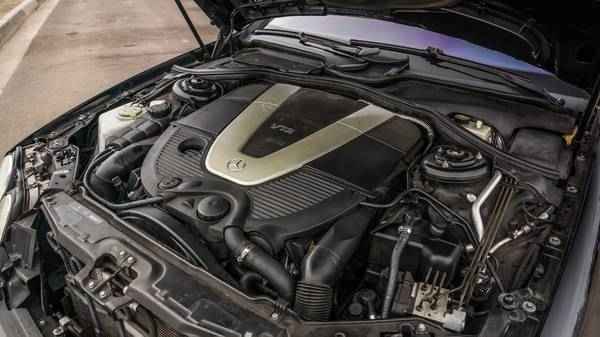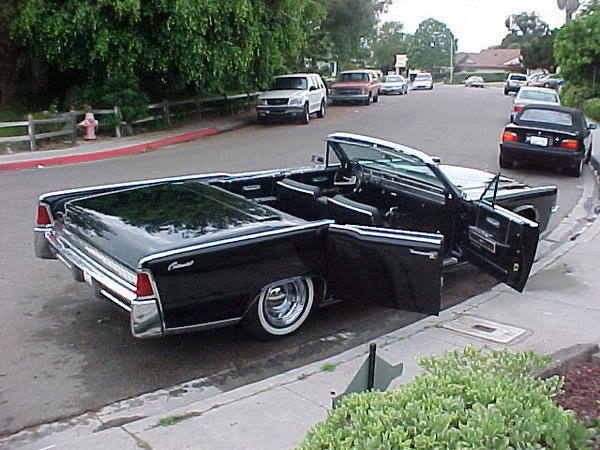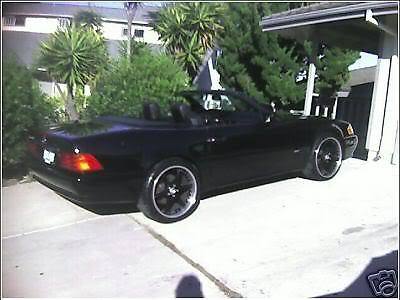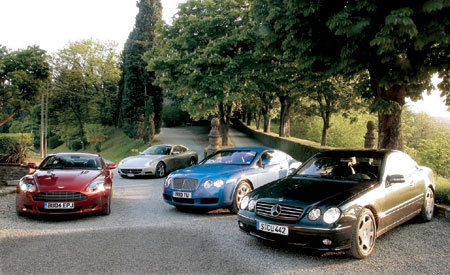Black Beauty. Smooth and Clean. Bi-turbo. New Wheels.
- Condition: Used
- Make: Mercedes-Benz
- Model: CL-Class
- SubModel: 5.5L V12
- Type: Coupe
- Trim: 5.5L V12
- Doors: 2
- Year: 2003
- Mileage: 114,000
- VIN: WDBPJ76J03A036918
- Color: Black
- Engine size: 5.5L SOHC SMPI 36-VALVE TWIN TURBO ALUMINUM-ALLOY V12
- Number of cylinders: 12
- Fuel: Gasoline
- Transmission: Automatic
- Drivetrain: Rear Wheel Drive
- Interior color: Black
- Vehicle Title: Clear
- Interested?
2003 Mercedes-Benz CL-Class 5.5L V12 Description
Excellence And Class. All in Shiney Black.Car looks and Drives amazing. $160k car is great for business or to make an impact socially at a fraction of the original cost. You can't buy another car at this price for this level of quality. those who know this car, Know.
Gets attention where ever it goes in one of the wealthiest cities in the country, La Jolla. the gold Standard. If you want to compete at an entry level, this is the car.
- The v12 badge stands out as a LIMITED Edition, top of the Line Benz. This is their Flagship model built with quality to compete with a Bently coupe.
Triple Black Beauty with near new $6,000 22 inch rims and Tires.
-lots of miles to go on them, recent oil change too.
- All Options for the year.
- Garaged. Don't even have time to drive, im in and out of town.
- Up to date on Service Thru Fletcher Jones Mercedes of Newport.
- No Modifications.
For Purchase in person preferred. Perfect interior. 11,999 / best
Will take offer for car without the 22 inch wheels for 11k.
Car looks and Drives amazing. $160k car is great for business or to make an impact socially at a fraction of the original cost.
You can see a couple other of my cars, I like limited edition black on black cars, with style and excellence. Just like this one. Buy in confidence.
SL600 convertible and 64 triple black Lincoln Continental convertible.
Don't have space for them all in my new location.
Car And Driver Review
Aston Martin DB9 vs. Bentley Continental GT, Ferrari 612 Scaglietti F1, M-B CL600 (Comparison cars in photos)
We put these three newcomers up against the latest version of an old-stager. There is a horsepower race going on in Europe, and Mercedes-Benz is the most fervent competitor. The CL600, originally designed for comfort rather than speed, now has a twin-turbo version of its 5.5-liter V-12 engine that develops 604 horsepower. We tried to acquire one of those for this comparison but were unsuccessful. The standard CL600 was, at $160,070, the least expensive car in this test but very nearly the quickest. The CL600 may not look and seem as special as the others, but this Benz is a high achiever.
------
Here's where you start fuming that the Benz's stat sheet. It's just about as quick as the Ferrari, has a roomier interior and tons more features, and is half the price.
The Benz surprised and impressed all of us. The CL600's 590 pound-feet of torque is a stunning 111 more than the Bentley's.
Moreover, despite the twin turbos forcing air into the 12 cylinders, we defy anyone to say it feels like a turbocharged car. It emits almost no turbo sound, and throttle response is simply superb. The five-speed automatic transmission may not have the bragging rights of a sixth gear, but five is all it needs. The Ferrari has a 16-percent-better power-to-weight ratio, yet the Benz equaled the Scag's 4.3-second 0-to-60-mph sprint. The CL's 2.4-second lunge from 30 to 50 mph is 0.1 second slower than the Ferrari's, and its 50-to-70 time is a half-second better. Punch the gas in this mutha and you're gone.
Then there's the semiactive hydraulic suspension. It's a system of sensors and computer-controlled hydraulic rams and shocks at all four corners. It can instantly adjust from cushy soft for soaking up bumps to sports-car stiff to reduce body lean in corners. It's not perfect--some abrupt freeway impacts send jitters through the body--but in general, it works fantastically. The CL digs into corners with a surprising amount of bite and enthusiasm. One tester wrote, "Wow, very impressive in the turns, feels almost as agile and frisky as the Ferrari." The Benz also has a wonderful talent for inhaling large dips and wallops and exhaling mere nudges to the occupants.
Although the steering is a tad numb, it has good on-center feel. All these cars are secure and comfy on the highway, but somehow the Benz is a tick better. Get it on the freeway, and it practically locks itself into its lane.
We also thought the Mercedes had the best back seat, and the Benz alone had such features as cooled front seats, radar-controlled cruise control, a sunroof, and power trunk and door closers. In the value game, even some six-figure cars are better than others.
The brakes still need work, however. Although they were effective--the 165-foot stop from 70 mph was second best--their feel and modulation were unnatural and inconsistent. We found during hard driving that the pedal travel and stiffness seemed to vary from one press to the next. They cost the Mercedes three points to the Ferrari, which won by only four.
In purely objective terms, the Benz was the winner. Of course, the Ferrari costs about double and its straight-line performance was not demonstrably better.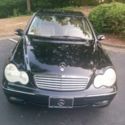 SMOOTH BLACK BEAUTY!
SMOOTH BLACK BEAUTY!
Mileage: 180,000
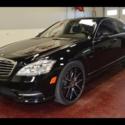 CLEAN TWIN TURBO BLACK CUSTOM WHEELS AUTO FAST LUXURY
CLEAN TWIN TURBO BLACK CUSTOM WHEELS AUTO FAST LUXURY
Mileage: 37,404
 FL Owned Beauty 2014 S550 Premium Turbo Low Miles Anthracite Blue Metallic CLEAN
FL Owned Beauty 2014 S550 Premium Turbo Low Miles Anthracite Blue Metallic CLEAN
Mileage: 20,313
 *BLACK BEAUTY* 500hp BI-TURBO CL600 MECHANICALLY EXCELLENT. LOW MILES.
*BLACK BEAUTY* 500hp BI-TURBO CL600 MECHANICALLY EXCELLENT. LOW MILES.
Mileage: 114,000
 AUTOBAHN *BLACK BEAUTY* BI TURBO CL600 MECHANICALLY EXCELLENT. LOW MILES.
AUTOBAHN *BLACK BEAUTY* BI TURBO CL600 MECHANICALLY EXCELLENT. LOW MILES.
Mileage: 114,000
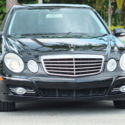 FLORIDA CLEAN-BLACK BEAUTY-SPORT PKG-HARMON KARDON-NAV-NEW TIRES-ONLY 48K MILES-
FLORIDA CLEAN-BLACK BEAUTY-SPORT PKG-HARMON KARDON-NAV-NEW TIRES-ONLY 48K MILES-
Mileage: 48,263
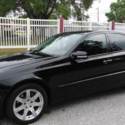 2007 MERCEDES-BENZ E350 ~~ 4-MATIC ~~ BLACK BEAUTY ~~ WE SHIP WORLDWIDE ~~ CLEAN
2007 MERCEDES-BENZ E350 ~~ 4-MATIC ~~ BLACK BEAUTY ~~ WE SHIP WORLDWIDE ~~ CLEAN
Mileage: 131,117
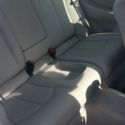 Super Clean rides smooth!!
Super Clean rides smooth!!
Mileage: 155,788
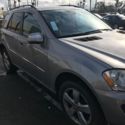 2009 Mercedes Benz Ml 350 Gold, Smooth and Clean
2009 Mercedes Benz Ml 350 Gold, Smooth and Clean
Mileage: 90,048
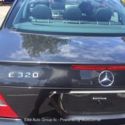 MERCEDES-BENZ E320 - MINT LUXURY - CLEAN, SMOOTH RIDE, STRONG ENGINE, AUTOCHECK
MERCEDES-BENZ E320 - MINT LUXURY - CLEAN, SMOOTH RIDE, STRONG ENGINE, AUTOCHECK
Mileage: 131,170
